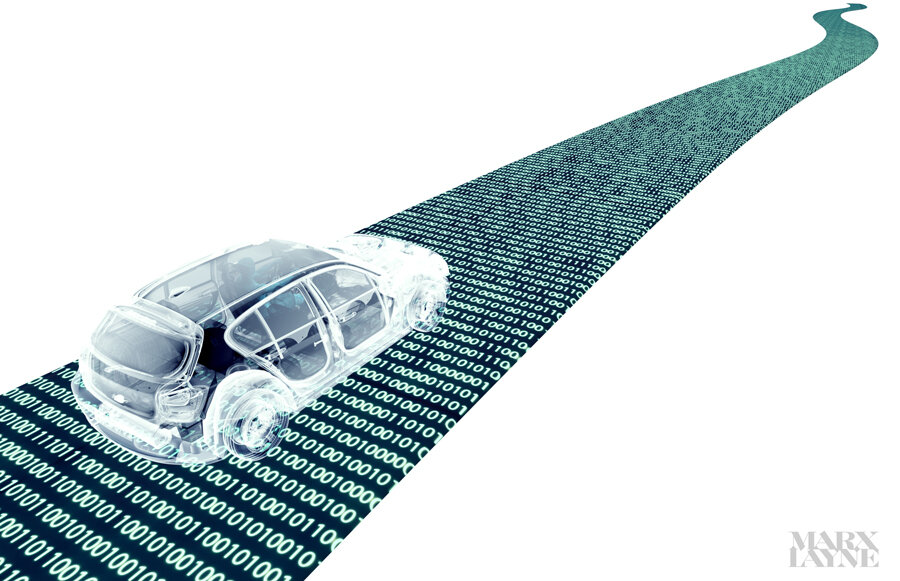
October 17, 2016
PR CHALLENGES OF CONSUMER ACCEPTANCE FOR AUTONOMOUS VEHICLES
Since the turn of the century, technological advancements have increased exponentially at a rate that you can measure by the minute. With these advancements, the entire world has enjoyed the luxury of even the most [...]

Since the turn of the century, technological advancements have increased exponentially at a rate that you can measure by the minute. With these advancements, the entire world has enjoyed the luxury of even the most taken for granted household items and electronics becoming autonomous.
With the introduction of the Keurig and Roomba, we can vacuum our house and brew our coffee while simultaneously getting ready for work in the morning. Autonomous has become synonymous with convenience.
With the thought of autonomous items paving the way for increased productivity and convenience, it is only natural that this logic be applied to vehicles. After all, think about how much more you could personally achieve throughout your day if you could complete various tasks during your commute.
Aside from adding value during a person’s commute, there also is potential for a variety of advantages. These might include lower insurance costs, reduction in car related fatalities and potentially faster travel times, just to name a few.
However, despite the host of obvious advantages, latest trends show that autonomous vehicles don’t seem to be a favorite among consumers. Typically when the newest gadget or piece of technology becomes available to the public, people that don’t already have it pre-ordered are waiting in line for it the day it comes out. So why aren’t consumers marveling at the idea of owning an autonomous vehicle? In the eyes of the public, the cons seem to outweigh the pros. Here are five of them:
- Control. Generally, people like the idea of being in control. Regardless of how unpredictable some outcomes can be (i.e. accidents), there is a certain sense of security a person feels when they’re in control of the task at hand. Taking that away makes them feel vulnerable and more susceptible to potential risks they believe they could prevent if they were in control.
- Security. As technology advances, security tends to follow suit; unfortunately, it seems to follow at a slower pace. While the organizations creating these vehicles have the best and brightest engineers in the world, forecasting every risk might very well be impossible. Preventing security breaches into the vehicle system to obtain information such as personal data, or even location, are going to weigh heavily on even the most tolerant consumer’s mind — and understandably so.
- System Failure. Technology has a tendency to fail, especially in the earlier stages of development and launch. Consumers are aware that when they purchase an item with the newest technology, customarily, there are bugs that come with it. Given the scope of autonomous vehicles, there are a multitude of areas in which the systems could fail, leaving consumers uneasy. While predictability of these failures can’t be foreseen, bad weather, digital traffic jams, data loss and overall system crashes can all be looked at as potential downsides of these vehicles.
- Motion Sickness. This may be the most overlooked aspect of why consumers may not want to purchase an autonomous vehicle. Motion sickness is usually triggered by not being able to cause the direction of motion within a vessel, coupled with the inability to anticipate the direction of motion itself. The activities that appeal most to willing consumers of these vehicles, such as reading, gaming or watching movies, all create the aforementioned effects, thus increasing the likelihood of motion sickness.
- Asset Protection. The depreciation value of cars is well known and documented. Since autonomous vehicles are a direct byproduct of technological advancements, how much value will they retain as said technology continues to move forward? Since cost is a likely concern already, analytical and cost conscientious spenders will be apprehensive to spend money on a vehicle with a poor resale value. This aspect remains unclear and at this point is complete speculation. However, unless there is a lucrative incentive to trade in previous non-autonomous vehicles for self-driving ones, most drivers likely will opt to maintain possession over the vehicles they can operate themselves. Which would bring us back to point number one — control.
According to a recent story published in PCWorld: “Only 10 percent of people surveyed by the University of Michigan said they would have no concerns at all about riding in fully self-driving cars. The research shows that while coverage of self-driving cars and the technology behind them has increased in the media, consumers are still unsure that the cars are safe.”
At the end of the day, it is abundantly clear that sizable public relations challenges exist for manufacturers. Chiefly, persuading a marketplace to give up day-to-day control of one of the most expensive and emotional purchases (besides their home) they will ever make will certainly be a challenging and complex task to accomplish.
Share This Story, Choose Your Platform!
Marx Layne is your competitive advantage.
Your reputation and success are our only concerns.
